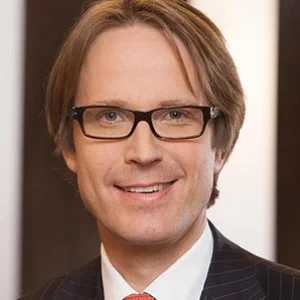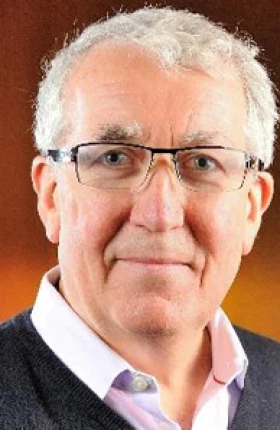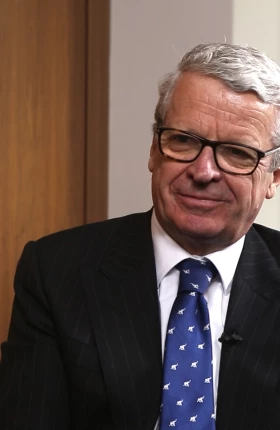Companies across industries and around the world face challenges that require transformative solutions. The utility industry is no different—in fact, companies in this industry must confront some particular and significant issues. As the head of transformation at Innogy (and formerly RWE), one of the largest power and gas providers in Europe, Roland Hess is very familiar with those issues. He spoke with Olaf Rehse, a senior partner in BCG’s Düsseldorf office, about the challenges and how Innogy has responded with new ways of operating and innovating, mitigating costs, and adapting corporate culture to become an instrument for change.
About Roland Hess
Senior Vice President, Applied Excellence, and Head of Delivery for NWOW (New Way of Working), Innogy
Roland Hess joined RWE/Innogy in 2010. Since March 2014, he has led the company’s largest groupwide transformation program (NWOW).
Before joining RWE/Innogy, he was a partner at Accenture and a member of its global technology leadership team for the resources industry. He was also a partner at The Advisory House, where he founded and built up operations in Austria and Germany. Prior to that, he was chief information officer at ÖBf.
Currently, he is a board member and the chief strategy officer of Plause.com (on behalf of Innogy), creating a “fitness tracker” for organizational health, intended to help speed and scale up the transformations of organizations large and small.
In today’s fast-paced world, companies need to increase revenues, lower costs, and delight customers. Doing that requires reinventing the operating model. What challenges does Innogy face? How do you deal with them?
Over the last few years, the utility industry has been massively disrupted. It became clear that the traditional business models are not applicable anymore. And it became clear that in our industry, we needed to look not only at our strategy but also at our organizational health—when we compared ourselves with other industries, we scored very low on some dimensions of organizational health. Realizing that “if you do what you always did, you will get what you always got” is quite an intense insight and, as I call it, “a conscious contact with reality.”
We also understood that scaling at the edge—which Innogy took literally by creating innovation outposts in Silicon Valley, Israel, London, and Berlin—and driving innovation will not help alone. “Corporate antibodies” will very quickly kill new ideas, and innovation efforts will be lost.
So we also embarked on a journey based on the saying “culture eats strategy for breakfast” and established various programs to change our culture and focus on preparing us for the future. One of these programs is called the new way of working, or NWOW. NWOW focuses on improving everyday processes for all 40,000 employees at Innogy, by addressing organizational health, effectiveness, and performance with a clear customer focus.
Our recent research indicates that utilities continue to be among the most inefficient service industries, with as much as 30% of its cost basis eaten up by waste. What approach did you take to mitigate costs and remain efficient?
NWOW is one approach we follow in this respect. In the last three years, NWOW has reached more than 25,000 employees at Innogy and RWE. The economic goal is to create €400 million of operating cash flow improvements. Furthermore, in an industry benchmark of organizational health, Innogy moved from the lowest quartile in five areas into the top-ranking quartile in three areas and the second quartile in the other two.
For us‚ getting the basics right—that is, focusing purely on real customer needs and keeping a high rigor on operational excellence—is key and certainly will lead to great efficiency gains. But in our NWOW program, we have seen higher efficiency gains by focusing also on how people work. Starting to change everyday behaviors and unlocking and setting free the “joy of getting better” in employees will lead to efficiency gains beyond the 30% in many areas.
How important is the people component in managing a transformation, and how do you address the change challenge?
I personally believe that the people component is everything, not only in the transformation but also in every business area. We trained more than 300 NWOW experts over the last four years, mainly internally and in order to fully implement the Innogy transformation in-house. Most of them are joining the NWOW team locally in business units or in a central team for two or three years before moving back successfully into business functions. But these colleagues are only enablers for the people in our business.
We have prepared the organization for change and for the groupwide rollout of initiatives like NWOW since 2012, when Peter Terium took over as CEO. In addition to NWOW, we created programs like NLL, which stands for next-level leadership, to prepare our top leaders for this journey and DBP, for delivering breakthrough performance, to help the team members of our top initiatives to practice change in the here and now of their own projects and learn and grow jointly with their peers.
Building the capabilities was and is key for us in order to succeed. Our key motto for this journey is “change starts with me today.”
Could you tell us a little more about the NWOW program and the learning you had throughout the journey?
NWOW is a combination of systemic change and lean, and we believe that combining these two ideas is the key success factor.
Before starting such a transformation, it is important to understand your organization as a “system” that over time grows specific behavioral patterns, based on “mental models”—that is, basic beliefs held by the organization, such as silo thinking or vertical power distance. Assuming that you are able to identify the systemic patterns and that change always starts on the “me” level, applying lean methodologies purposefully can break these patterns.
Let’s take an example: the systemic pattern of vertical power distance, which is the distance between leadership and the shop floor. To break this pattern on the individual level, a lean measure like Gemba walks could be implemented. The impact is twofold: the pattern of vertical power distance is actively broken and, because they understand what is really going on, leaders are more connected and make better decisions, leading to higher business impact.
The lessons we’ve learned from this journey are simple:
- It is a constant, ongoing and dynamic, not something with a beginning and an end.
- It is inseparable from work—how you go about work is change in action.
- The only thing you can change is what is happening in the here and now.
- People support what they create—work with, not on, an organization.
- The ability to change, including being open to the new, is critical for success.
- Change is for a goal. You need a very clear transformational purpose.





